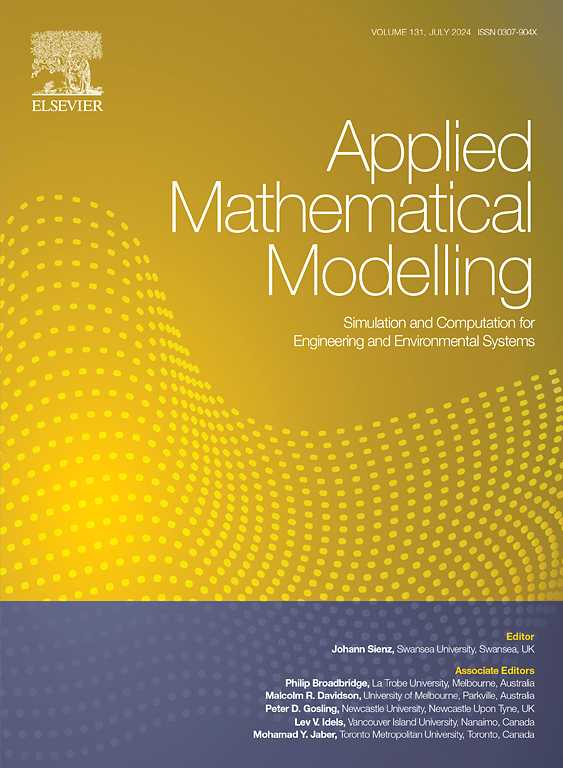Modeling of CNT alignment state on the strain sensing characteristics of MWCNT-based nanocomposites
IF 4.4
2区 工程技术
Q1 ENGINEERING, MULTIDISCIPLINARY
引用次数: 0
Abstract
The strain sensing characteristics of MWCNT-based nanocomposite sensors are highly dependent on the orientation and distribution of CNTs. Most CNT sensors are neither perfectly aligned nor randomly oriented; they are just the two limiting state of partially aligned sensors. To cover this wider distribution, an anisotropic homogenization model is established to study the axial and transverse multi-field coupled performances of MWCNT-based nanocomposite strain sensors from perfectly aligned to randomly oriented state. The transversely isotropic conductivity and mechanical moduli are utilized as the dual homogenization parameters in the present anisotropic analysis. The effective mechanical moduli are evaluated via the Mori-Tanaka method, while the electrical conductivities are calculated by the effective-medium approximation. The loading-dependent tunneling distance among the partially aligned MWCNTs is established under the axial or transverse loading to assess the contribution of electron tunneling. The predicted axial and transverse strain sensing capacities, including the resistance change ratios and strain sensitivity factors, of partially aligned MWCNT-based nanocomposite sensors are demonstrated and shown to agree with experiments. The axial sensing characteristics of a partially aligned strain sensor is higher than that of a randomly oriented one due to the alignment of MWCNTs. The optimal MWCNT volume fraction of high strain sensing characteristics is determined to be near the percolation threshold. The revealed anisotropic electromechanically coupled behaviors can provide guidance to tailor the axial and transverse sensing characteristics for the general class of partially aligned nanocomposite strain sensors.
碳纳米管对准状态对mwcnts基纳米复合材料应变传感特性的影响
基于mwcnts的纳米复合材料传感器的应变传感特性高度依赖于CNTs的取向和分布。大多数碳纳米管传感器既不完全对齐也不随机定向;它们只是部分对准传感器的两种极限状态。为了覆盖这一更广泛的分布,建立了各向异性均匀化模型,研究了基于mwcnt的纳米复合材料应变传感器从完美排列到随机取向状态下的轴向和横向多场耦合性能。在本各向异性分析中,横向各向同性电导率和力学模量作为双均质参数。有效力学模量采用Mori-Tanaka法计算,电导率采用有效介质近似法计算。在轴向或横向加载下,建立了部分排列的MWCNTs之间与负载相关的隧穿距离,以评估电子隧穿的贡献。对部分对准mwcnt纳米复合材料传感器的轴向和横向应变传感能力(包括电阻变化率和应变敏感系数)进行了验证,并与实验结果相吻合。由于MWCNTs的对准,部分对准应变传感器的轴向传感特性比随机取向应变传感器的轴向传感特性更高。确定了具有高应变传感特性的最佳MWCNT体积分数接近渗透阈值。所揭示的各向异性机电耦合行为可以为定制一般类型的部分对准纳米复合应变传感器的轴向和横向传感特性提供指导。
本文章由计算机程序翻译,如有差异,请以英文原文为准。
求助全文
约1分钟内获得全文
求助全文
来源期刊

Applied Mathematical Modelling
数学-工程:综合
CiteScore
9.80
自引率
8.00%
发文量
508
审稿时长
43 days
期刊介绍:
Applied Mathematical Modelling focuses on research related to the mathematical modelling of engineering and environmental processes, manufacturing, and industrial systems. A significant emerging area of research activity involves multiphysics processes, and contributions in this area are particularly encouraged.
This influential publication covers a wide spectrum of subjects including heat transfer, fluid mechanics, CFD, and transport phenomena; solid mechanics and mechanics of metals; electromagnets and MHD; reliability modelling and system optimization; finite volume, finite element, and boundary element procedures; modelling of inventory, industrial, manufacturing and logistics systems for viable decision making; civil engineering systems and structures; mineral and energy resources; relevant software engineering issues associated with CAD and CAE; and materials and metallurgical engineering.
Applied Mathematical Modelling is primarily interested in papers developing increased insights into real-world problems through novel mathematical modelling, novel applications or a combination of these. Papers employing existing numerical techniques must demonstrate sufficient novelty in the solution of practical problems. Papers on fuzzy logic in decision-making or purely financial mathematics are normally not considered. Research on fractional differential equations, bifurcation, and numerical methods needs to include practical examples. Population dynamics must solve realistic scenarios. Papers in the area of logistics and business modelling should demonstrate meaningful managerial insight. Submissions with no real-world application will not be considered.
 求助内容:
求助内容: 应助结果提醒方式:
应助结果提醒方式:


